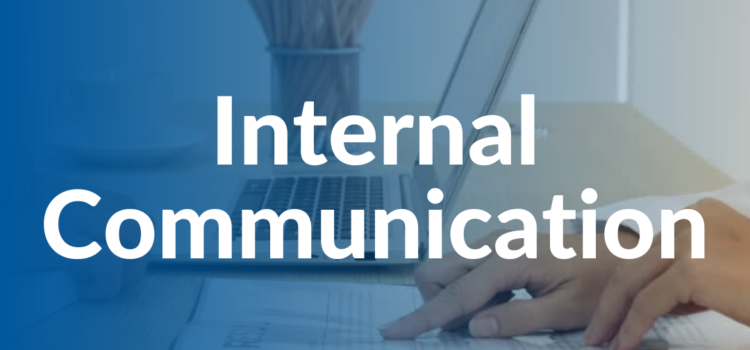
Effective internal communication serves as the backbone of a thriving organisation, promoting a culture of connection, transparency, and engagement among employees. It transcends the mere exchange of information; it creates an environment where team members feel valued and informed. Poor communication can lead to misunderstandings, decreased productivity, and diminished employee morale, ultimately jeopardising business success. In this guide, we examine the importance of internal communication, the repercussions of neglecting it, and practical strategies to strengthen it within your organisation. By implementing these strategies, you can build a more cohesive, engaged, and productive workplace.
Why is Internal Communication Important?
Internal communication acts as the lifeline that connects every part of a corporation, from top leadership to front-line staff. It helps align the entire team with the company’s vision and objectives, ensuring that everyone is moving in the same direction. In fact, a Forbes study reveals that over 40% of employees believe poor communication erodes trust in both leadership and their colleagues. Furthermore, research by Simon and Simon shows that a staggering 97% of workers feel that communication impacts their daily task performance. When communication is open, consistent, and flows freely throughout the company, it builds trust and engagement among employees. This, in turn, makes the organisation not just stronger but also more efficient in achieving its goals.
Consequences of Poor Internal Communication
A study from Simon and Simon shows that 86% of employees blame workplace failures on inadequate communication. The following are some key consequences of poor internal communication:
Low Employee Morale
When communication is insufficient or unclear, employees often feel disconnected, unappreciated, or out of the loop. Nearly half of the respondents in a Forbes survey reported that poor communication negatively affected their job satisfaction, while 42% said it increased their stress levels. Without clarity on expectations or access to essential information, employees may experience frustration, which can erode their motivation and enthusiasm for work.
Workplace Conflict
Poor communication can lead to misunderstandings and workplace conflicts, as employees may misinterpret messages, intentions, or directives. When information is not shared consistently or communication channels are not clearly defined, disagreements can arise, putting a strain on professional relationships. If left unresolved, these conflicts can escalate and disrupt teamwork and collaboration.

Higher Level Of Employee Turnover
A recent Gallup article found that 80% of employees are less likely to seek new job opportunities if they feel recognised and appreciated, underscoring the retention benefits of good communication. When examining the reasons behind employee departures, 95% of HR departments point to job burnout as a primary factor; a problem that can be alleviated through consistent communication and setting realistic expectations.
Reduced Productivity
Ineffective communication can slow down decision-making, lead to repeated efforts, and cause errors. When instructions, updates, or feedback are not clear, employees often waste time clarifying tasks or correcting mistakes, which hampers productivity. According to Forbes, poor communication affected workers in several ways: 49% said it reduced their productivity, nearly half reported a negative impact on job satisfaction, and 42% experienced increased stress levels. In contrast, 72% of business leaders observed that clear communication has boosted their team’s productivity.
Financial and Legal Risks
Miscommunication can lead to costly errors, including missed deadlines, compliance violations, or mistakes in financial reporting. When employees are not kept up-to-date on regulatory changes, policy revisions, or legal obligations, the corporation becomes vulnerable to fines, lawsuits, and damage to its reputation. Clear and consistent communication is essential not just for maintaining day-to-day operations but also for protecting the business from legal and financial liabilities. As noted by Gallup, losing an employee can cost a company anywhere from tens of thousands to 1.5-2.0 times the employee’s annual salary, highlighting the financial impact of poor communication.

Signs Of Strong Internal Communication
Organisations with strong internal communication practices exhibit:
- High levels of employee engagement and morale.
- A clear understanding of mission, goals, and values across all levels.
- Consistent and open feedback loops, where employees feel safe to share their thoughts and ideas.
- Low levels of workplace conflict, misunderstandings, and misinformation.
- A noticeable impact on productivity and quality of work. According to McKinsey, well-connected teams can boost productivity by 20-25%.
Navigating Internal Communication in a Hybrid Work Environment
The move toward hybrid and remote work has brought new challenges to internal communication. Remote employees, in particular, may feel disconnected or left out, making it essential to establish clear and consistent communication practices. Research from the Centre for People and Buildings found that 45% of employees have been working from home due to the pandemic, increasing the need for effective remote communication strategies. Additionally, 70% of employees reported facing difficulties engaging with colleagues while working from home, especially when it came to spontaneous interactions and teamwork.
To address these challenges:
- Embrace digital communication tools: Utilise video, audio, chat, and project management platforms to keep remote employees engaged. Forbes found that over half of the workforce who completed their study (56%) prefer video communication, while 55% use audio for their interactions.
- Diversify communication formats: Incorporate personalised messages, regular updates, and informal check-ins to maintain a human element in digital communication. While personalised greetings are used by 44% of employees, casual elements like emojis (42%) and GIFs (34%) remain popular for keeping communication lively.
- In-person workdays & socials: Prioritising team socials and in-person workdays can help bridge communication gaps. According to TravelPerk, 58% of employees cited in-person collaboration as crucial for cultivating a sense of belonging, while 43% believed it boosted productivity and creativity.

Top 10 Tips For Strengthening Internal Communication
-
Establish Clear and Consistent Communication Frameworks
It’s important to have different platforms in place to meet various communication needs. For instance, email is still widely used, especially among remote workers, while video calls and in-person meetings are preferred for more direct interactions. Direct messaging works well for quick updates and team collaboration. Setting clear guidelines on when to use each channel helps prevent information overload and ensures that the right messages reach the right people. A well-defined communication strategy should be a core part of every HR toolkit, keeping employees informed and helping them feel connected to each other and the organisation.
-
Encourage All Types of Feedback
A culture that embraces feedback from all directions creates a more engaged workforce. It shouldn’t just be about managers giving feedback to employees; employees should feel empowered to share insights with leadership as well through upward feedback. Peer reviews and anonymous surveys can also provide valuable learning opportunities and help identify communication gaps. Implementing ongoing feedback into your business helps keep the lines of communication open and addresses issues before they escalate.
-
Cultivate a Sense of Belonging
Creating an inclusive and collaborative atmosphere helps employees feel like they are part of something bigger. Prioritising DEI, celebrating employee milestones, and encouraging social interactions are just a few ways to cultivate a sense of belonging. When employees feel included and valued, they are more likely to engage openly in communication and share their thoughts and ideas.
-
Provide Relevant Training & Tools
Training is essential for equipping employees with the skills needed to interact effectively and make the most of communication tools. When employees have access to better tools and skills for connecting with each other, productivity can increase by up to 30%. Workshops on digital platforms, courses on different communication styles, and leadership training can help ensure that everyone can express themselves clearly and understand others’ preferred ways of interacting.
-
Promote a Shared Purpose
When employees understand the company’s vision, mission, and goals, they see how their roles contribute to the bigger picture. This shared purpose gives them a sense of direction and motivation, making them feel more connected to the organisation. Regularly communicating updates on business goals and progress keeps everyone aligned and focused.

-
Build Stronger Relationships with Emotional Intelligence
Understanding your employees on a deeper level through emotional intelligence is essential, with 96% of employees saying that they’d like a more empathetic approach to communication in the workplace. While there should be a consistent communication framework across the company, individual team members may have their own preferred ways of interacting. These preferences can be influenced by factors such as age and personality. For example, a Forbes study revealed that 40% of people aged 59-77 favour face-to-face communication, whereas only 17% of those aged 18-26 share this preference. By recognising these differences and adjusting communication strategies accordingly, you can strengthen relationships and cultivate a more cohesive team environment.
-
Embrace an ‘Open Door’ Policy
An open-door policy isn’t just about saying, “You can always come to me.” It’s about truly engaging with your employees, listening to their concerns, and showing genuine interest in their ideas. To improve internal communication, it’s essential for leaders to lead by example. When you make yourself accessible and promote transparency, you create an atmosphere of trust that encourages employees to share their thoughts freely. This openness not only strengthens relationships but also establishes a more collaborative and innovative work environment where everyone feels valued.
-
Prioritise Team Building Activities
Investing in team-building activities strengthens relationships and breaks down barriers to communication. These activities can range from virtual coffee breaks and social events for remote workers to cross-departmental projects that encourage collaboration. In-person outings or team retreats also offer opportunities for team members to bond in a relaxed setting, making it easier to communicate openly.
-
Make Internal Knowledge Easily Accessible
Employees shouldn’t have to search high and low for important documents or resources. By creating a centralised knowledge hub, such as an intranet portal or a document management system, you can make it easy for everyone to find essential information. Having answers to frequent questions and access to support resources readily available not only saves time but also reduces frustration and builds trust within the company. According to Forbes, 54% of remote workers reported that poor communication affected their trust in leadership, while 52% noticed a decline in trust within their teams. Making internal knowledge easily accessible can help address these issues and strengthen trust across the board.
-
Consider Your Management Style
The way leaders communicate has a significant impact on the organisation’s communication culture. Take a moment to reflect on whether your management style encourages or hinders open dialogue. Being approachable, setting clear expectations, and tailoring your approach to different individuals can significantly improve how effectively information is shared and understood. When leaders promote transparency and make themselves accessible, it creates an atmosphere of trust where employees feel comfortable sharing their thoughts. This open communication is crucial; after all, 85% of people believe that eye contact plays an important role in business interactions, and 70% feel that facial expressions, like smiling, greatly enhance workplace communication. By being mindful of your management style, you can help cultivate a more communicative and engaged team.

Strengthening Internal Communication with Performance Management Tools
Using performance management software like emPerform can streamline communication and improve alignment. Here’s how:
- Facilitates Continuous Feedback: Enables real-time feedback sharing between employees and managers.
- Clarifies Goals and Expectations: Software allows for clear goal-setting and tracking, ensuring that employees understand their objectives.
- Supports Transparent Performance Reviews: Automated reviews reduce biases and provide a clear picture of performance.
- Increases Employee Engagement: Regular feedback and progress tracking keep employees motivated and aligned with agreed-upon targets.
In today’s fast-paced work environment, prioritising effective internal communication is more crucial than ever. The strategies outlined in this guide offer practical solutions to improve communication within your organisation, ultimately leading to increased employee morale, productivity, and retention. By promoting a culture that values open dialogue, feedback, and connection, you not only strengthen team relationships but also align your workforce with the company’s mission and goals.
Embracing tools like performance management software, such as emPerform, can further streamline communication and create a cohesive work environment. Start implementing these strategies today to cultivate an engaged and high-performing team that thrives on effective communication.
Book a FREE demo today or contact us for any advice on performance management.
